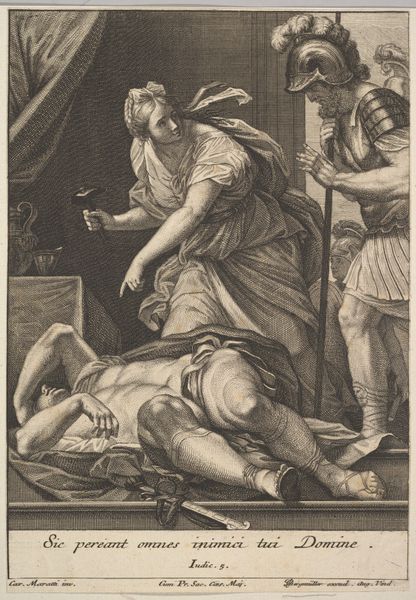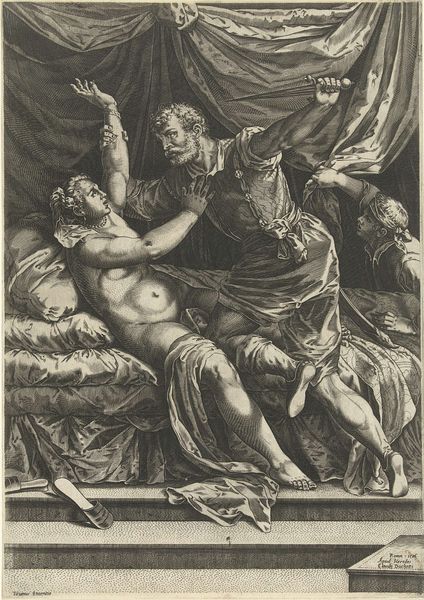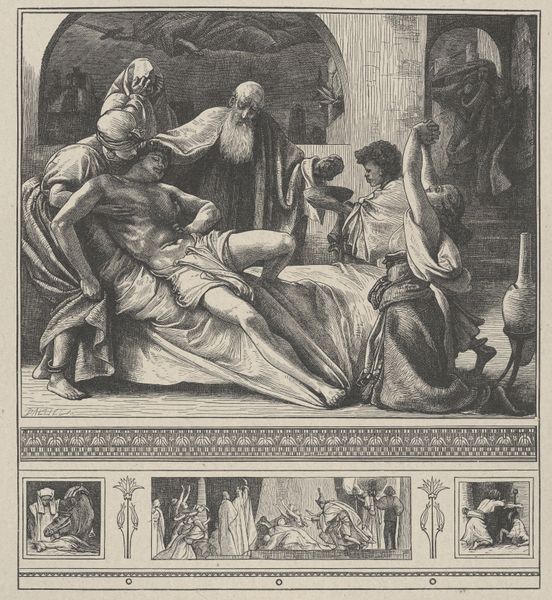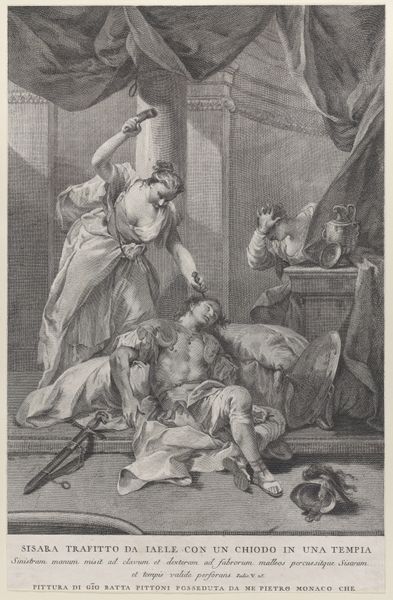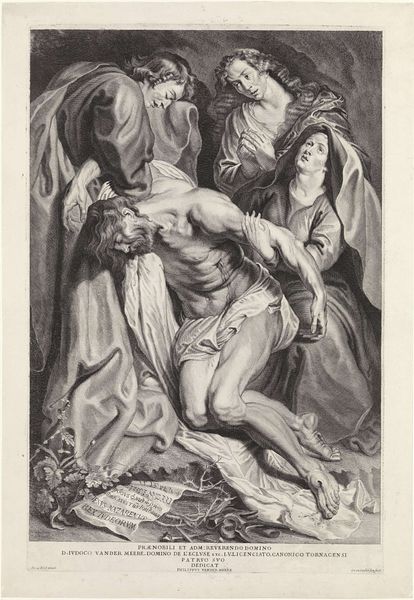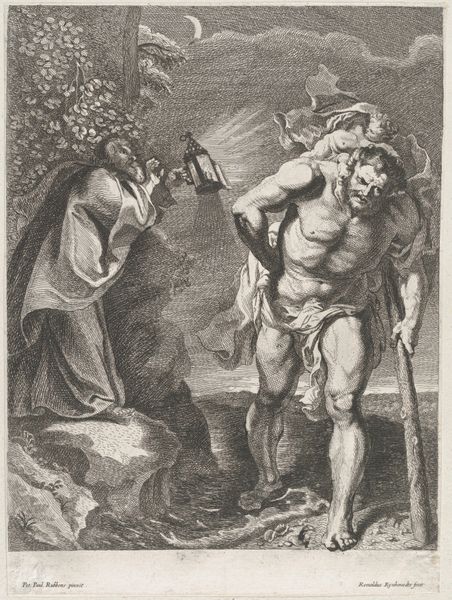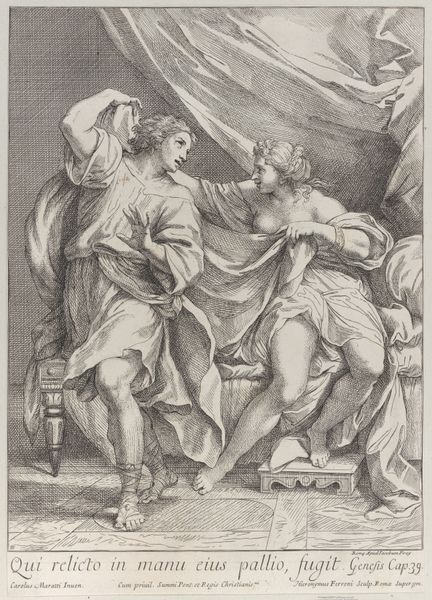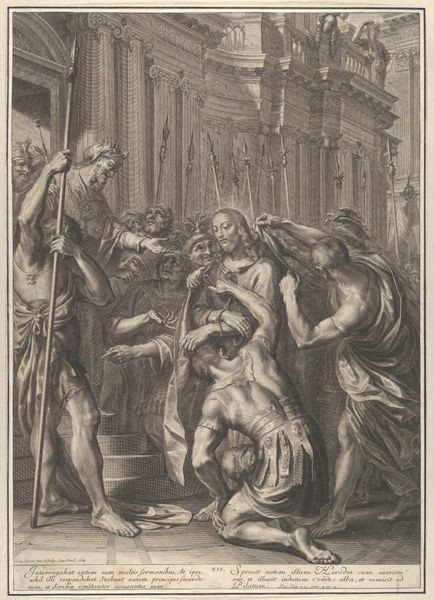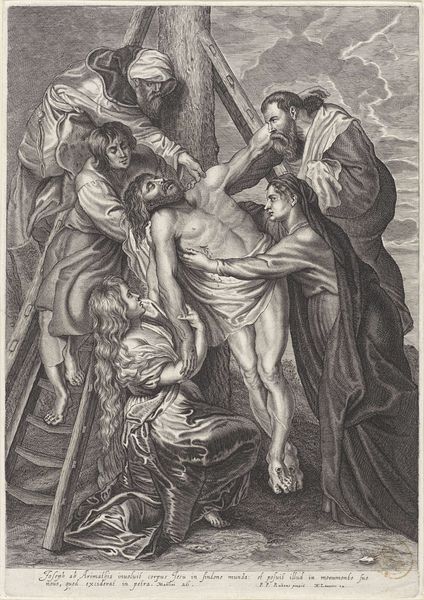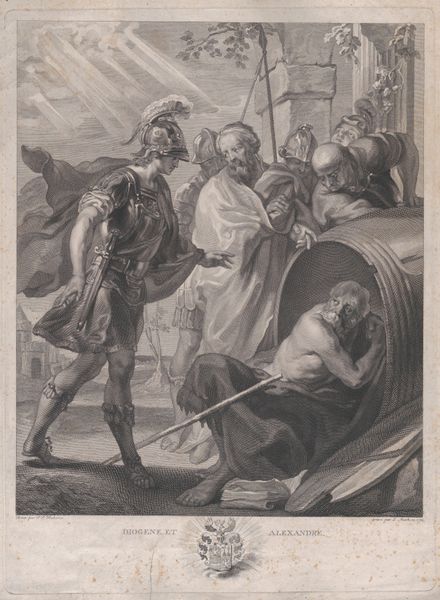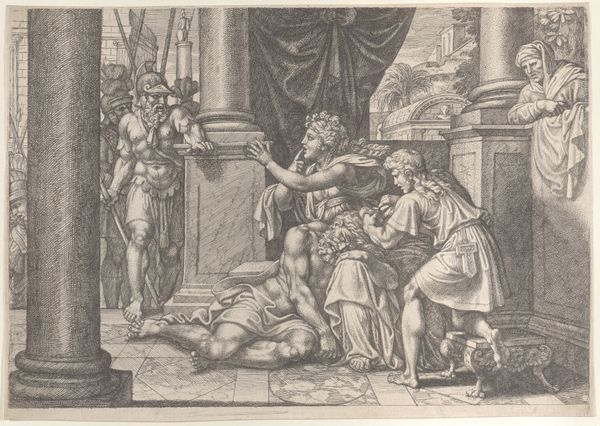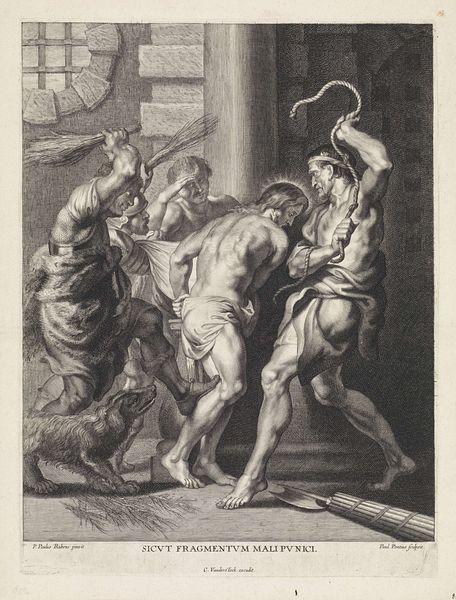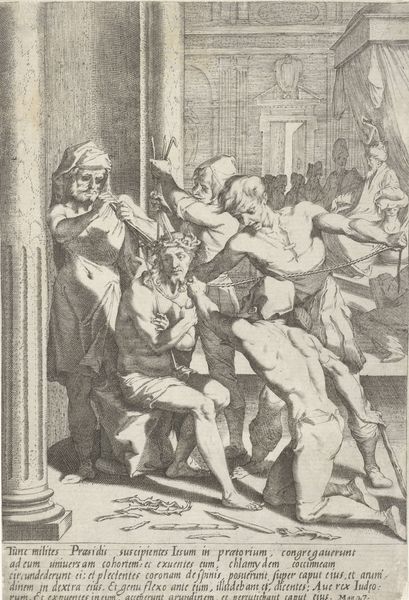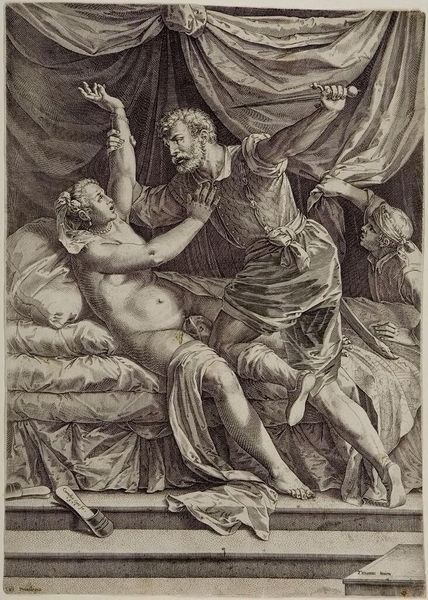
drawing, print, engraving
#
drawing
#
narrative-art
#
baroque
# print
#
figuration
#
history-painting
#
engraving
Dimensions: Sheet (Trimmed): 15 3/8 × 11 3/8 in. (39.1 × 28.9 cm)
Copyright: Public Domain
Curator: Here we have a fascinating print, an engraving made around 1705 by Hieronymus Ferroni. It's titled "Jael slaying Sisera," currently residing here at the Met. My initial reaction is one of unease; the stark contrast of light and shadow, typical of the Baroque style, amplifies the violence. Editor: Yes, there is a tension inherent to that Baroque aesthetic. I find myself immediately drawn to the implications of this image, particularly when thinking about power dynamics. Who gets remembered as a hero and who as a villain— especially considering that Jael’s actions here are seen as righteous in the context of the time? Curator: That’s a key point. It illustrates the biblical narrative from the Book of Judges where Jael, a woman, defeats Sisera, a military leader who threatened Israel, by driving a tent peg through his skull as he slept. Editor: Right, so we need to acknowledge the role of gender, class, and even colonization within the historic and religious contexts depicted, and not excuse violence. What's interesting is how a print like this might have served to legitimize certain acts, even promote ideas around a gendered 'right to kill' for a seemingly higher purpose, justified by the biblical imperative. Curator: It's undeniable. Art often serves political purposes. Looking at the piece objectively, Ferroni has positioned Jael as almost regal in her posture, standing above the defeated Sisera with the hammer in hand. And notice how his guards are present as secondary witness to this act of killing. The sword that rests by Sisera seems like a token reminder of his masculine power that is, at this point, totally defunct. Editor: Precisely, the choice to include those armed soldiers reinforces the public aspect of this killing, framing it as a cautionary lesson. Jael takes center stage, a champion against oppression but let’s be careful that such narrative does not blind us. Curator: These discussions— they remind us of art’s multifaceted impact. Reflecting on it all, this isn’t simply an illustration of a Bible story but also a reflection on the justifications and celebration of violence across socio-political dimensions. Editor: I concur, considering what messages are ingrained in artistic production reminds us how our interpretations shift over time as culture continues to evolve. Thank you for sharing your insights.
Comments
No comments
Be the first to comment and join the conversation on the ultimate creative platform.
